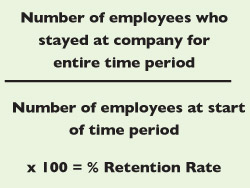Why Do Employees Leave?
Some Answers and Retention Tips
Millions of people voluntarily leave their jobs every month. The repercussions of this can be far reaching. In fact, some estimates put the cost of replacing an employee at between 50 — 200 percent of their annual salary.
Although job-hopping is on the rise, most employees won’t leave an environment that nurtures them. Here are some helpful tips to stop an employee from leaving before it happens.
 |
|
Source: Linkedin Talent Solutions |
Benchmark your retention rate
Turnover can be a normal part of the workplace lifecycle. But when one of your best employees leaves, it often triggers a snowball effect where others become disengaged, morale drops, and productivity plummets.
Stay updated on turnover trends by calculating your employee retention rate quarterly and comparing it to the benchmark you’ve set for your company.
Know when to step in
Employees don’t want to be micro-managed, but they need a certain level of guidance in order to feel supported. There may come a time when a star employee must move on to advance their professional development. If you have developed a strong relationship with them, they will probably come and talk to you before handing in their notice.
Schedule a Meeting
If you notice uncharacteristic signs – like the quality of someone’s work slipping – carve out time to meet with them to gauge how they’re feeling and discuss solutions.
Six things to look out for
Do all of your employees feel like they’re supported, valued, challenged, and provided a good work-life balance? If not, you might have a flight risk. Learn to take action before an employee has left by identifying these common, nonverbal warning signs.
- Sees little opportunity for growth
Reason: An employee is more likely to leave due to job stagnation and uncompetitive pay.
Solution: Discuss a development and promotion plan to prevent dissatisfaction or restlessness.
- Works too much overtime
Reason: An employee is at high risk for burnout if they’re working beyond the usual demands of a job.
Solution: If an employee’s workload is more than they can handle, offer additional support like helping them prioritize or offloading work.
- Becomes significantly less productive
Reason: An employee who is less productive than usual, like calling in sick more often, may be ready to move on.
Solution: Have a frank discussion about how they’re feeling; be careful not to come across as angry or passive-aggressive.
- Hesitant to commit to a long-term project
Reason: Flightiness surrounding a long-term deadline can indicate that an employee doesn’t see themselves sticking around.
Solution: They may not want to commit for other reasons, but having a conversation early can help to keep them happy and engaged.
- Has a long commute
Reason: The time it takes to get to work can increase an employee’s chances of burnout. (Nearly 25% of U.S. workers have quit due to a long commute.)
Solution: Offering commuter benefits or flexible and remote working options could be beneficial.
- Habitually casual employee starts dressing more professionally: i.e. from tees and jeans to suit and tie
Reason: If an employee usually dresses casually but switches to more businesslike attire, it may signal they’re looking elsewhere.
Solution: Start a friendly discussion with the employee to gauge their happiness level and address their career path.